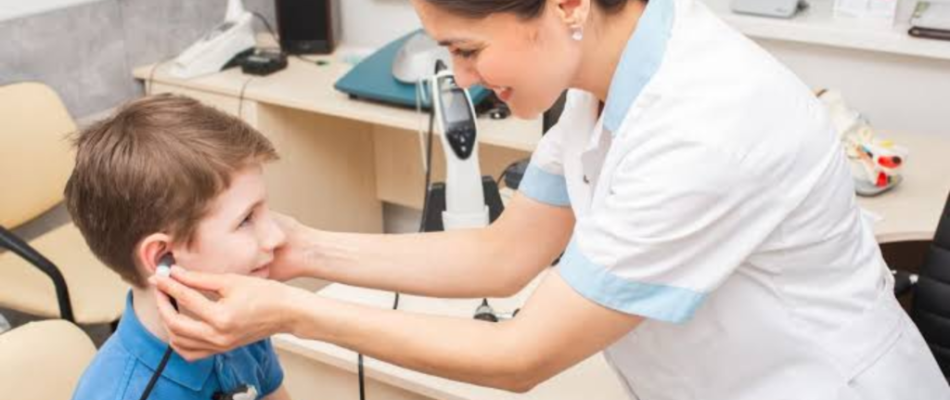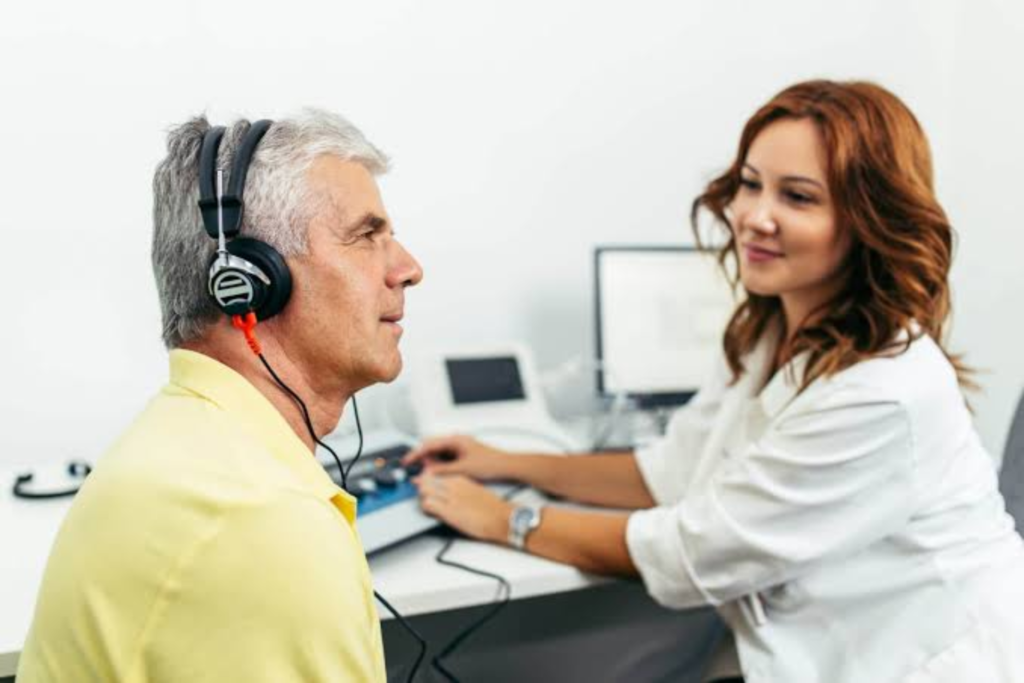Hearing is a critical part of a child’s development, influencing their ability to communicate, learn, and interact with the world. For parents, understanding the importance of hearing health and knowing when to seek an audiometry test for their child, specifically audiometry for children, is essential.
1. What is Audiometry for Children?
Audiometry for children is a series of hearing tests used to assess a child’s ability to hear sounds at different pitches and volumes. These tests are tailored to the child’s age, developmental stage, and ability to cooperate. Audiometry helps identify hearing loss, determine its severity, and guide appropriate interventions. Understanding audiometry for children can help parents make informed decisions regarding their child’s hearing health.
2. Why is Audiometry Important for Children?
Regular audiometry for children can help track their hearing health over time, allowing for early intervention when necessary. Parents should consider audiometry for children as a proactive measure in their child’s overall health plan.
Audiometry for children is not only crucial for identifying hearing issues but also for ensuring that children can engage fully in their educational environments. By prioritizing audiometry for children, parents can help facilitate better communication and learning outcomes.
Hearing plays a crucial role in a child’s development, particularly in:
- Speech and Language Development: Hearing is essential for learning to speak and understand language.
- Social Skills: Hearing allows children to interact with peers and build relationships.
- Academic Success: Hearing is critical for learning and following instructions in school.
- Emotional Well-Being: Hearing loss can lead to frustration, isolation, and behavioral issues.
Early detection of hearing loss through audiometry allows for timely intervention, which can significantly improve a child’s quality of life.
3. Signs Your Child May Need a Hearing Test
Parents should be aware of the following signs that may indicate hearing loss in children:
With audiometry for children, early detection of hearing loss can lead to timely interventions that significantly improve a child’s quality of life. It’s essential for parents to understand the importance of these tests.
- Delayed Speech or Language Development: Struggling to meet speech milestones.
- Difficulty Following Directions: Frequently misunderstanding or ignoring instructions.
- Turning Up the Volume: Increasing the volume on the TV or electronic devices.
- Ear Pain or Discomfort: Complaining of earaches or pulling at their ears.
- Inattentiveness: Appearing distracted or unresponsive in conversations.
- Academic Struggles: Falling behind in school or having difficulty concentrating.
- Tinnitus: Complaining of ringing, buzzing, or other noises in their ears.
If you notice any of these signs, it’s important to schedule an audiometry test for your child.
4. Types of Audiometry Tests for Children
Behavioral Audiometry
- Visual Reinforcement Audiometry (VRA): Used for infants and toddlers. The child turns their head toward a sound, and a visual reward (e.g., a flashing light or moving toy) is provided.
- Conditioned Play Audiometry (CPA): Used for preschoolers. The child performs a simple task (e.g., placing a block in a bucket) when they hear a sound.
Pure-Tone Audiometry
- Measures the child’s ability to hear pure tones at different frequencies and volumes.
- Typically used for older children who can follow instructions and respond reliably.
Speech Audiometry
- Evaluates the child’s ability to hear and understand speech.
- May include repeating words or sentences in quiet and noisy environments.
Otoacoustic Emissions (OAE) Testing
- Measures sounds produced by the inner ear in response to a stimulus.
- Often used for newborn hearing screening.
Auditory Brainstem Response (ABR) Testing
- Measures the brain’s response to sound using electrodes placed on the scalp.
- Useful for infants, young children, and those who cannot participate in behavioral tests.
5. What to Expect During an Audiometry Test for Children
The testing process varies depending on the child’s age and the type of test:
- Infants and Toddlers:
- Tests like VRA or OAE are used.
- The child sits on a parent’s lap, and sounds are played through speakers or earphones.
- Preschoolers:
- CPA is commonly used.
- The child participates in a game-like activity to respond to sounds.
- Older Children:
- Pure-Tone and Speech Audiometry are used.
- The child wears headphones and responds to tones or speech.
The audiometry test for children is painless and typically takes 20-30 minutes. Parents are usually allowed to stay with their child during the audiometry process, providing comfort and reassurance.
6. How to Prepare Your Child for an Audiometry Test
- Explain the Process:
- Use simple language to describe what will happen during the test.
- Reassure your child that the test is not scary or painful.
- Practice Listening Games:
- Play games that involve listening and responding to sounds to familiarize your child with the process.
- Bring Comfort Items:
- Bring a favorite toy or blanket to help your child feel secure.
- Schedule Wisely:
- Choose a time when your child is well-rested and alert.
- Stay Calm and Positive:
- Your attitude can influence your child’s experience. Stay calm and encouraging.
7. Interpreting the Results
After the test, the audiologist will explain the results using an audiogram (a graph showing hearing thresholds) or other metrics. Key points to understand:
- Normal Hearing: The child can hear sounds within the normal range for their age.
- Mild to Moderate Hearing Loss: The child may struggle with soft or distant sounds.
- Severe to Profound Hearing Loss: The child may have difficulty hearing most sounds.
If hearing loss is detected, the audiologist will recommend next steps, such as hearing aids, speech therapy, or further testing.
8. Frequently Asked Questions (FAQs)
Q1: At what age should children have their first hearing test?
- Newborns should undergo hearing screening shortly after birth. Additional tests may be needed as they grow.
Q2: Can hearing loss in children be treated?
- Yes, early intervention with hearing aids, cochlear implants, or therapy can significantly improve outcomes.
Q3: What if my child is too young to cooperate during the test?
- Audiologists use specialized tests (e.g., VRA, ABR) that do not require active participation from the child.
Q4: How often should children have hearing tests?
- Children should have regular hearing tests as part of routine check-ups, especially if they have risk factors or symptoms.
Understanding the various types of audiometry for children tests is crucial for parents. Each test is designed to evaluate different aspects of hearing and is adapted to the child’s age and cooperation level.
Q5: Are audiometry tests covered by insurance?
- Many insurance plans cover pediatric hearing tests. Check with your provider for details.
9. Conclusion
Audiometry for children is a vital tool for ensuring healthy hearing and development. By understanding the importance of hearing tests, recognizing the signs of hearing loss, and knowing what to expect during the process, parents can take proactive steps to support their child’s hearing health. If you have any concerns about your child’s hearing, don’t hesitate to schedule an audiometry test with a licensed audiologist. Early detection and intervention can make a world of difference in your child’s life.
In conclusion, audiometry for children plays a vital role in ensuring healthy hearing and development. By understanding the importance of hearing tests, recognizing the signs of hearing loss, and knowing what to expect during the audiometry process, parents can take proactive steps to support their child’s hearing health.
Parents should make audiometry for children a priority in their child’s healthcare routine, as early detection and intervention can immensely benefit their overall development.





